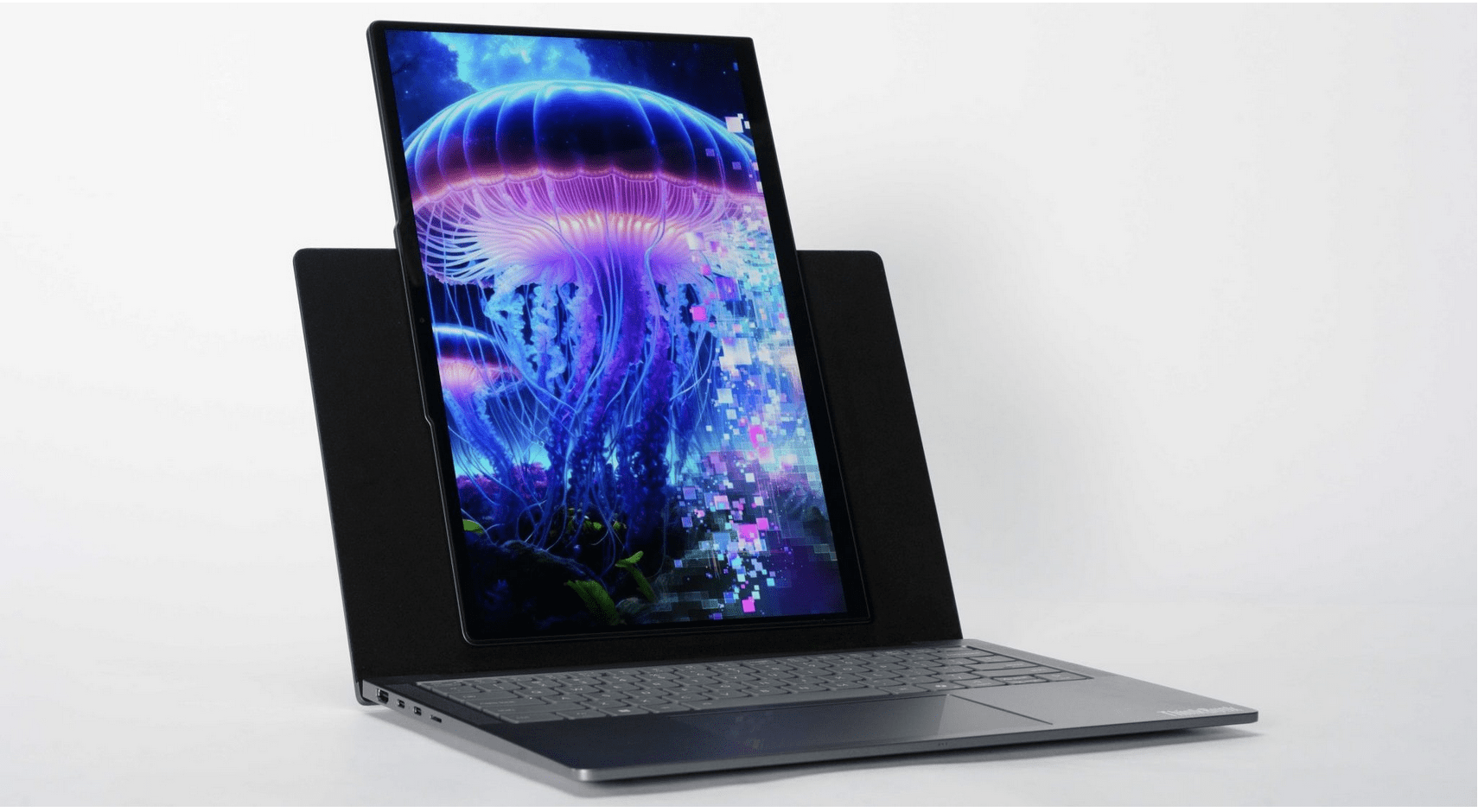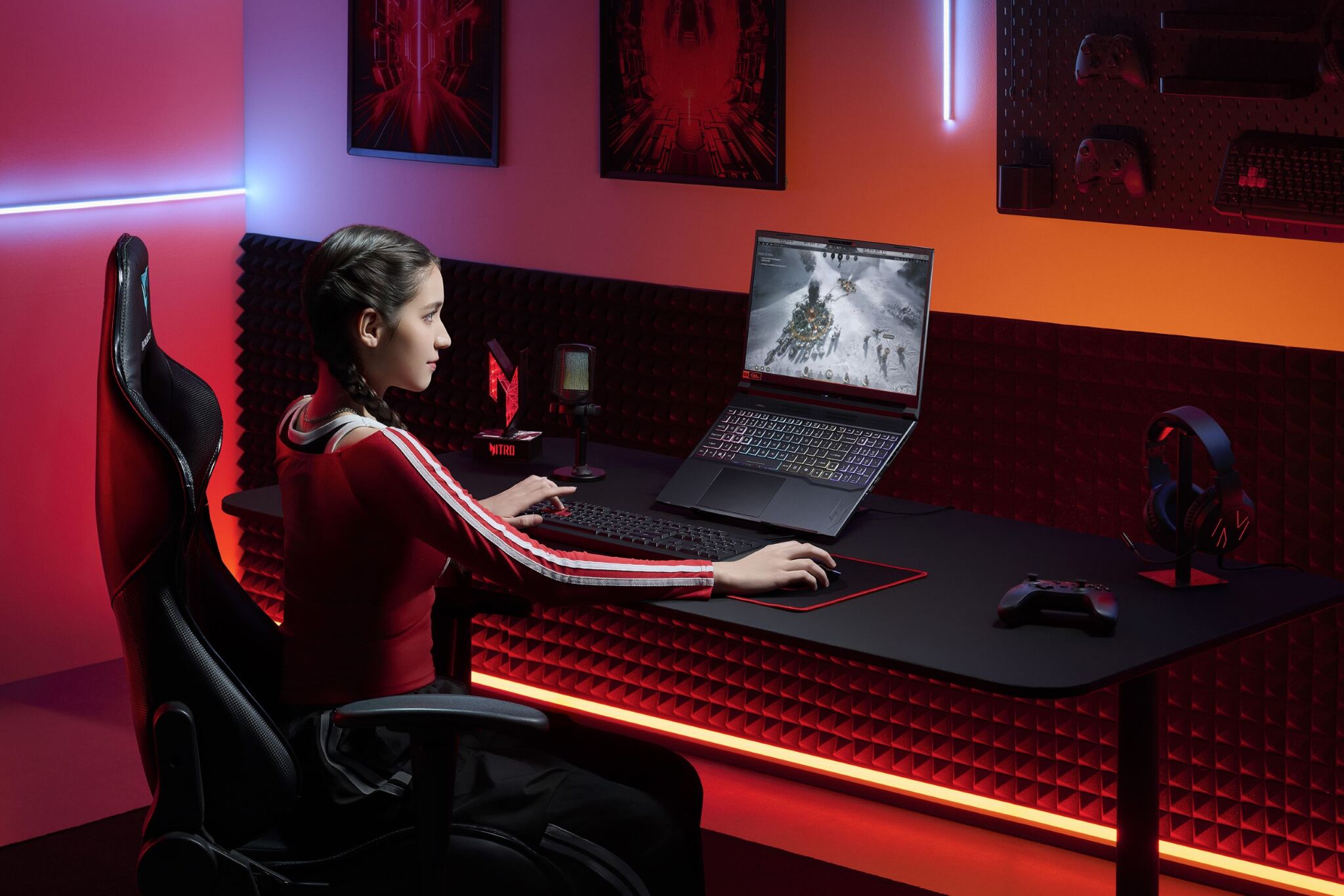
Lenovo’s ThinkBook VertiFlex Concept is a 14-inch clamshell that, on first glance, looks unexceptional.
But if you nudge the top-right of the screen, the entire panel rotates 90 degrees inside its bezel, switching to portrait.
It’s a mechanical pivot track, meaning there’s no foldable OLED and no motors involved.
That makes this one of Lenovo’s more grounded concepts and, therefore, more likely to ship.
To be clear, it’s yet to ship – and may never do so – but Lenovo brought a prototype to IFA.
Those who took it for a test run discovered that the rotation feels sturdy enough to do one-handed.
The current iteration of the VertiFlex boasts two Thunderbolt ports (presumably Thunderbolt 4), one USB-A port, HDMI, and a 3.5mm jack.
At 17.9 mm thick and 1.39 kg, it’s thinner and lighter than Lenovo’s rollable ThinkBook Plus but still chunkier than a conventional ultraportable.
Lenovo is also positioning the layout to play nicely with its Smart Connect app for quick phone-PC handoff.
Lenovo has spent years throwing weird and wonderful ideas at the wall – rollable screens, foldables, even transparent prototypes.
VertiFlex seems likelier to attract consumer interest than some of Lenovo’s more adventurous concepts.
It brings a common monitor behaviour (vertical orientation) to laptops without exotic panels or expensive motors.
What remains to be determined is how much Lenovo will charge for it and whether there will be significant interest in it at that price point.
Lenovo’s ThinkBook Plus Gen 6 Rollable, a laptop with an extendable screen, was unveiled at CES earlier in the year. It will reportedly cost US$3,300-US$3,499 ($5000-$5,300).
But just as many consumers might baulk at paying that amount for an extendable screen, they may also do so for a flappable one.
That noted, portrait mode is undoubtedly useful for long text, feeds and code, and the mechanical approach lowers risk and cost.
If Lenovo green-lights it, VertiFlex could slot neatly into the company’s broader ‘AI-first’ ecosystem.




























